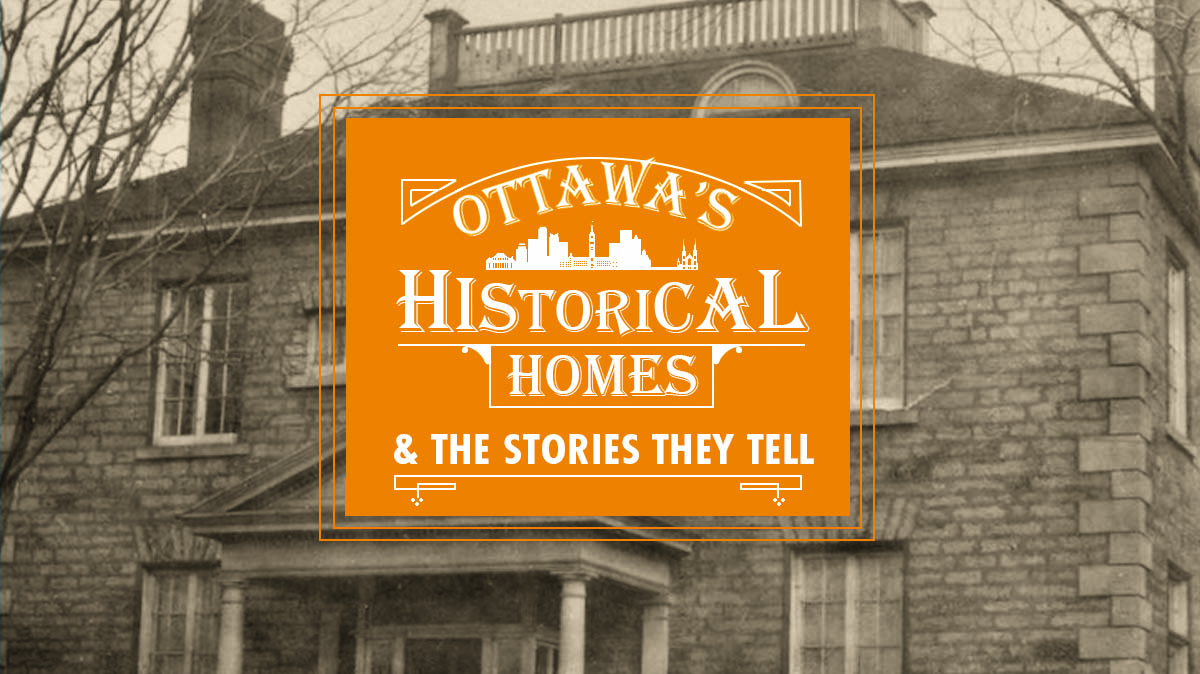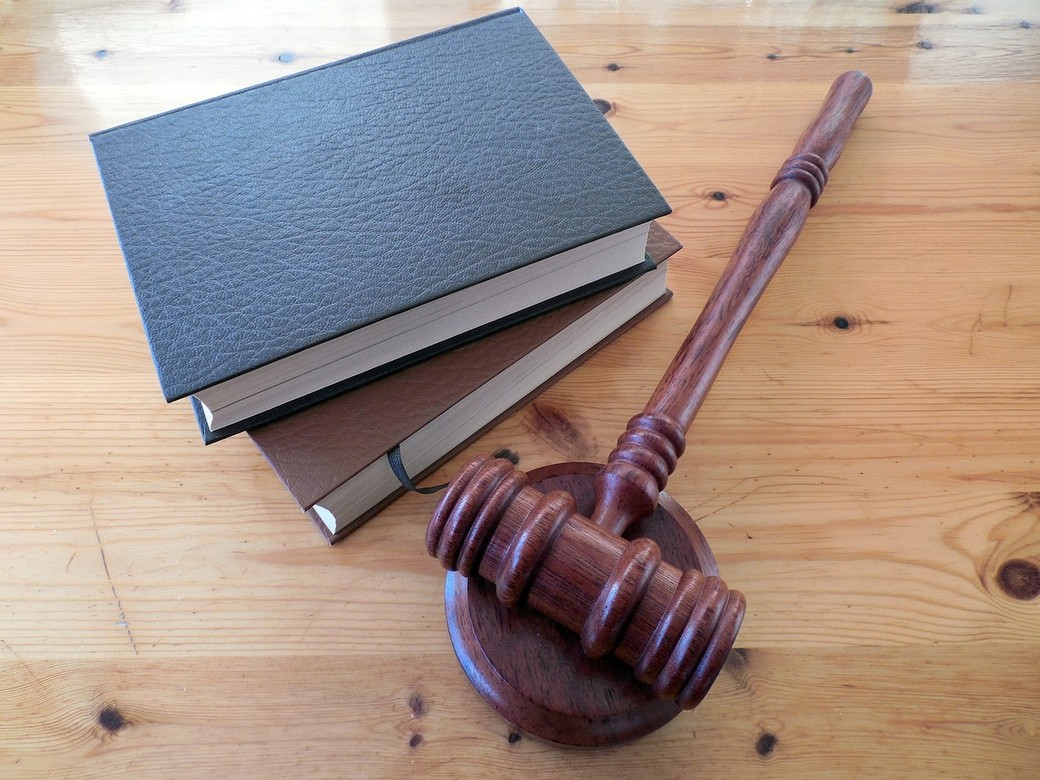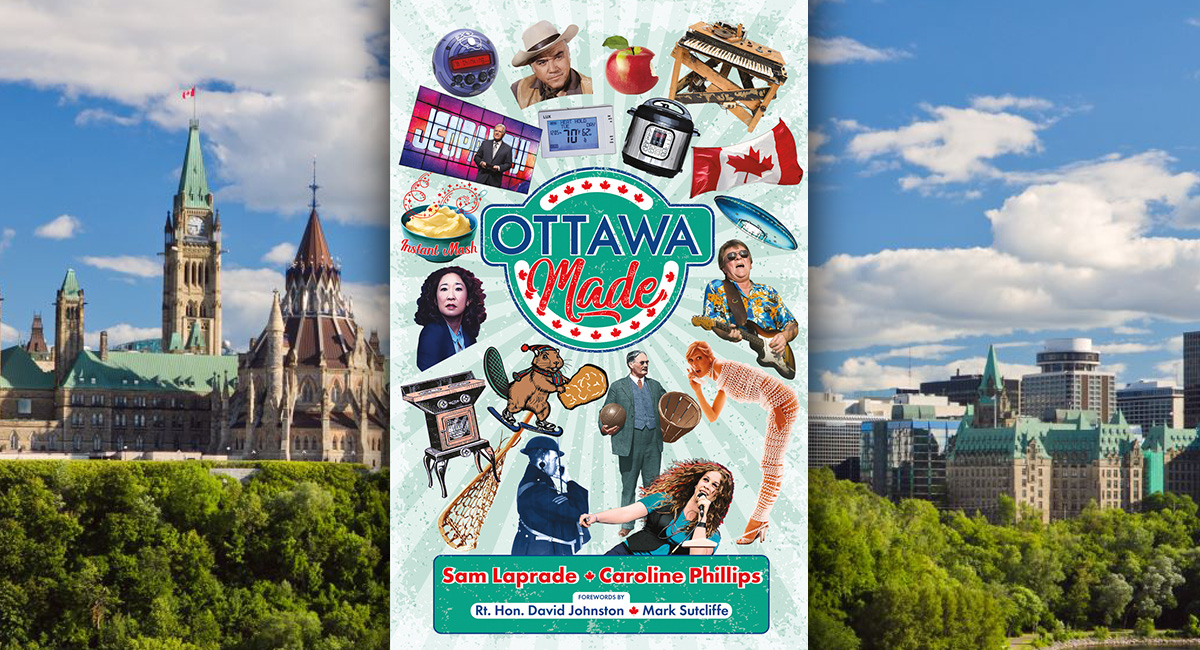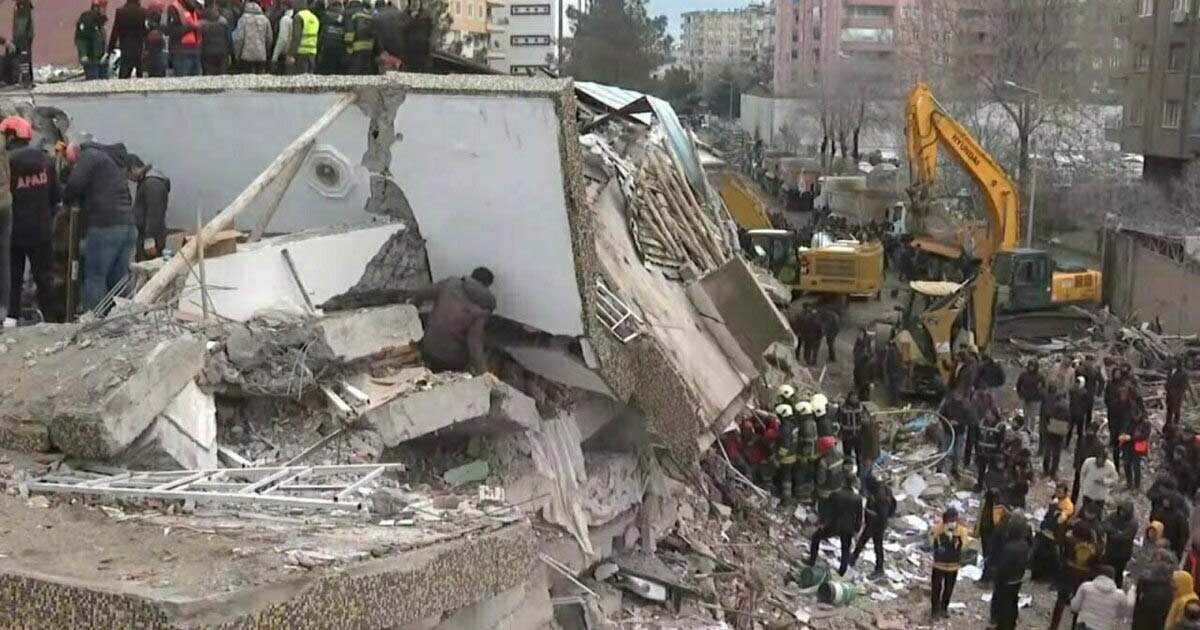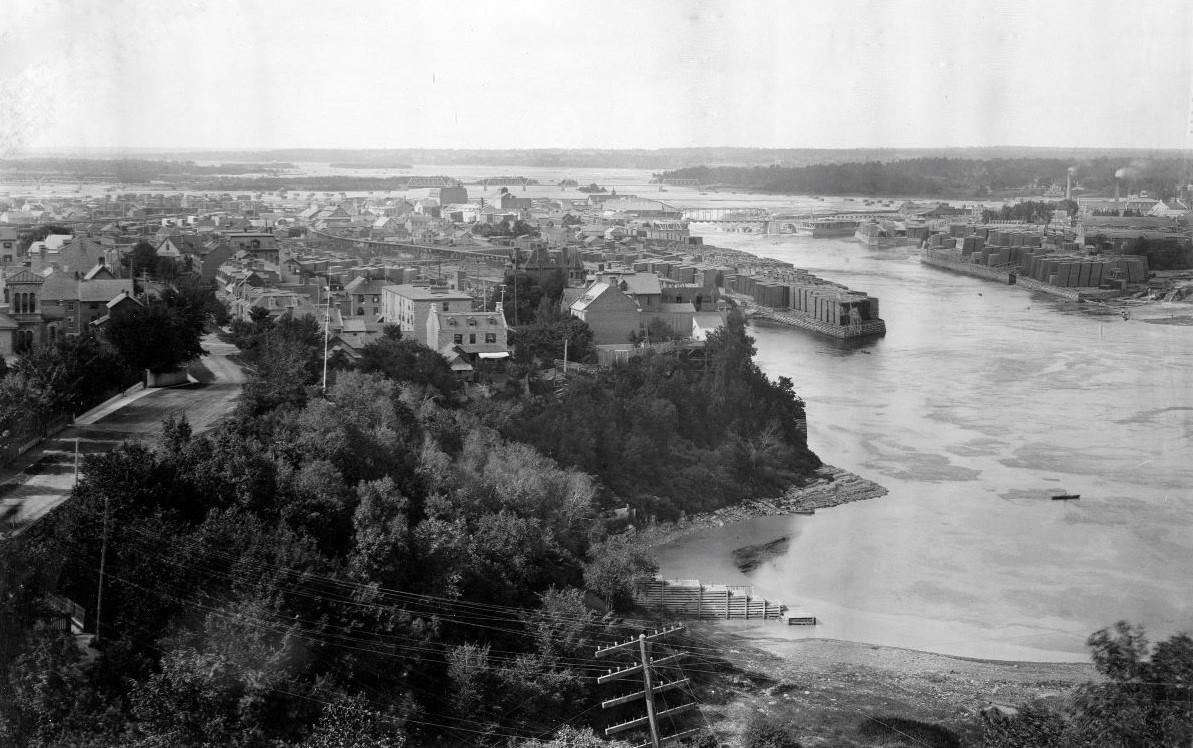
LeBreton Flats. Where dreams go to fizzle out.
Above: View of LeBreton Flats (PHOTO: c.1892, photograph: silver gelatin, Bytown Museum, P752)
Ottawa is the only G7 capital that features a gigantic ghost town within sight of its parliamentary precinct. This peculiarity is not the result of some natural disaster, but rather the good intentions of the Diefenbaker government to clean up and revive what was the decaying neighbourhood and industrial zone known as LeBreton Flats. Ottawa life-timers may believe the
Flats are cursed, as it remains mostly, embarrassingly vacant almost 60 years after bulldozing began.
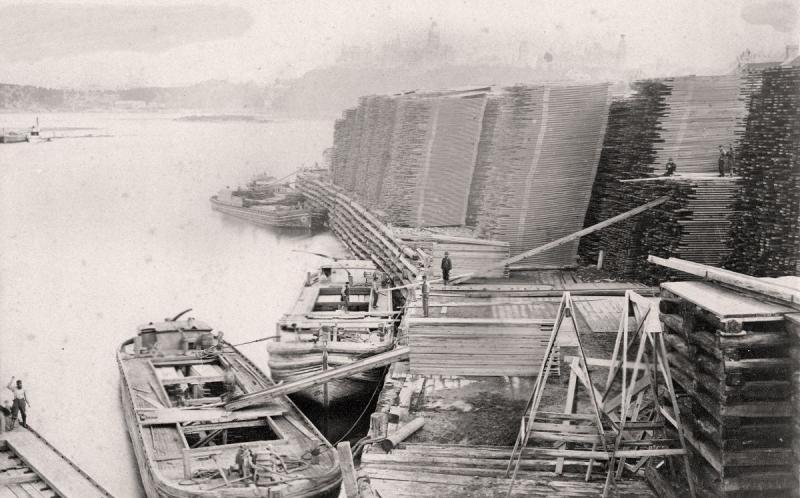
The great stacks of lumber on Chaudière and Victoria islands fuelled the Great Fire of 1900 that started across the river in Hull (Gatineau) and burned LeBreton Flats. (PHOTO: c.1890s, print: albumen, Bytown Museum, P2738a)
The British settlement of what was an ancient Indigenous gathering place by the Chaudière Falls is a tale rife with failure and sordid ambitions. Loyalist Robert Randall first purchased what was surveyed as ‘Lot 40’ in 1809 intending to harness the water power for mills. Unfortunately, the first of many, many plans for the Flats was foiled when Randall’s financial backers went bankrupt and he landed in a debtor’s prison. When he was released in 1820, Randall immediately sued the government for damages. Lot 40 was up for sale under a sheriff’s authority.
George Ramsay, the Earl of Dalhousie and Governor General of British North America, had knowledge of Capt. Joshua Jebb’s survey between Kingston and the Ottawa River that confirmed the viability of a military canal. At a gathering of officers in Richmond, Dalhousie was informed of the need for storehouses en route to Montreal, with the south shore of the Ottawa at the Chaudière being the perfect location for both projects. He opened his mouth and informed the gathering of his intention to grab Lot 40 as soon as Randall could be located. Too bad for Dalhousie that one Capt. John LeBreton was also in attendance.
LeBreton got wind of the sheriff’s sale taking place in Brockville and deftly enticed local lawyer Livius Sherwood to go halfsies on Lot 40. The two men bought it for £499, leaving Dalhousie livid and accusing LeBreton of putting profit ahead of the concerns of the Crown. And profit they did, selling off lots and laying the groundwork for LeBreton Flats 1.0.

The Great Fire of 1900 burned just about everything on the Ottawa side as far south as Carling Avenue. (PHOTO: silver gelatin, Bytown Museum)
By the 1850s, the district boomed with logs and lumber yards. A residential neighbourhood laced with train tracks built up until the Great Fire of 1900 wiped out most of central Hull and just about everything on the Ottawa side as far south as Carling Avenue. 15,000 people were victims of an honest-to-goodness housing crisis and emergency. LeBreton 2.0 slowly emerged as an industrial zone with houses, taverns, and diners serving workers.
The groundwork for LeBreton 3.0 was exposed when the feds demolished the entire district, displacing almost 3,000 people from their dilapidated but affordable homes. A few brick stragglers and a fascinating network of aqueducts can still be found around the edges. It was to be home to a new bureaucratic epicentre and a freeway, with little to offer the public as recreation or national pride. It’s become a place where visitors to the War Museum are discouraged from turning 180º to face caramel condo intrusions in what otherwise resembles downtown Beirut.
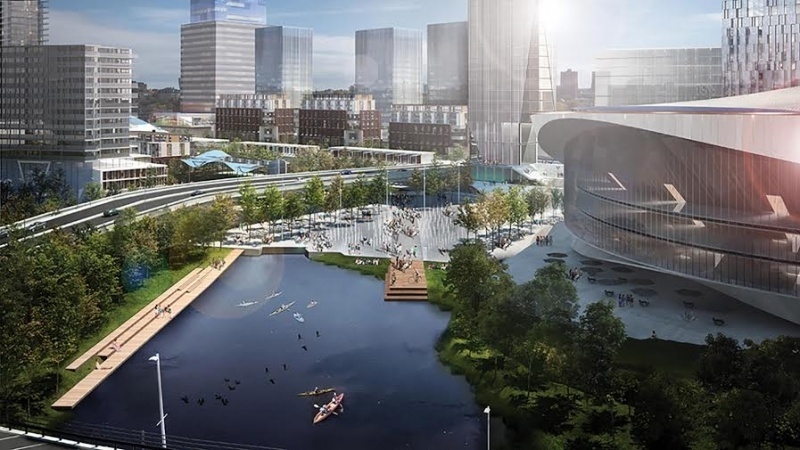
The Rendeyvous LeBreton’s partnership between John Ruddy (Trinity Development) and Eugene Melnyk (Ottawa Senators) collapsed — no surprise given the track record of the NCC to manage projects. (PHOTO: RENDEZVOUS LEBRETON)
In the mid-19th century, central Paris was polluted with squalor, social crisis, and danger. It was a long-standing vision of Bonaparte to create an Imperial Paris with a grand plan akin to Vienna. The fulfillment of that dream was undertaken by his nephew, Louis-Napoléon Bonaparte, who commissioned Georges-Eugène Haussmann to transform the sprawling medieval quarters into the Paris the world knows today. He did it in less time than The Flats have been sitting vacant. Of course, everybody knows the vaudeville team of Ruddy and Melnyk, who promised to finally relieve Ottawa of its biggest hole, but who instead blew up years of public/private/public planning and urban dream-weaving. So goes the adage that the more interests are involved in a decision, the less likely a decision will be made.
The first real master plan for LeBreton was released by the NCC almost a year ago, and is still no closer to realization on land that would have long ago been fit for occupancy. It’s not exactly bold. More greenspace and water in a city that probably has the highest per capita of both on the continent. Why not make it a real tribute to the spirit of Ottawa and name it Parc Raisonnable Sensible Park, where one can sit docile by Sorry Pond and feed the ducks gluten-free snacks from a vending machine. Or consider that while Ottawa is not Paris, it’s not Milwaukee either.

